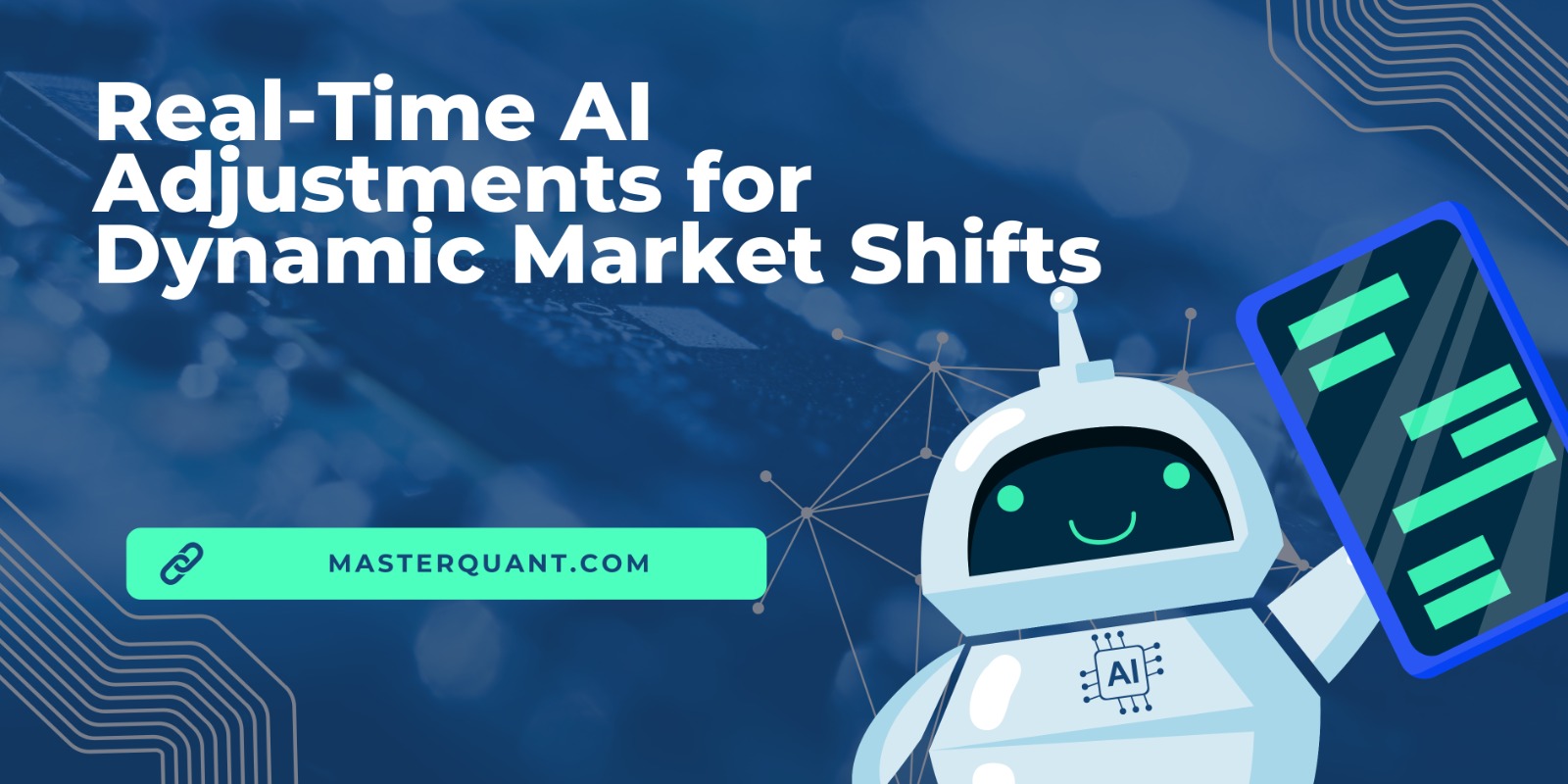
As the crypto markets become more competitive and dynamic, AI trading platforms like MasterQuant and TrustStrategy are leading a new wave of automation—leveraging MEV (Maximal Extractable Value) strategies once exclusive to deep blockchain developers. These platforms now provide everyday traders access to powerful tools once reserved for elite validators and coders.
In this guide, we’ll explore how MEV works, how MasterQuant and TrustStrategy implement MEV optimization, and what traders should know about the risks and advantages of using these platforms.
What Is MEV in Crypto?
Maximal Extractable Value (MEV) refers to the additional profits that can be earned by manipulating the order of transactions in a block before it’s finalized on a blockchain like Ethereum. Traditionally, this manipulation was carried out by miners or validators. Today, AI-powered platforms like MasterQuant and TrustStrategy are incorporating MEV-based strategies into their trading infrastructure.
By strategically ordering or even inserting their own transactions, these platforms generate additional returns via:
- Front-running: Placing trades just before a large known order to capitalize on its price impact.
- Sandwich attacks: Buying and selling around a user’s transaction to influence price movement.
- Liquidation hunting: Identifying and profiting from margin positions nearing forced liquidation.
These strategies were once manual or semi-automated, but MasterQuant and TrustStrategy use real-time data pipelines and on-chain scanning to automate them fully.
How MasterQuant and TrustStrategy Use MEV Bots
Both MasterQuant and TrustStrategy offer institutional-grade tools that operate 24/7, scanning pending transactions across Ethereum, BNB Chain, and even Solana. Here’s how these platforms break down MEV execution:
1. Transaction Monitoring
These platforms tap directly into blockchain mempools—monitoring all unconfirmed transactions. This enables the AI engine to identify when large trades are about to hit the market and prepare for optimized positioning.
For example, TrustStrategy’s bots can detect a large buy order on Uniswap and automatically deploy a sandwich strategy to extract a margin from the price change.
2. MEV Opportunity Detection
MasterQuant leverages machine learning to rank transaction profitability. It distinguishes noise from actionable arbitrage or front-run opportunities. Its real-time analytics engine calculates slippage effects, volatility response, and latency risk—all in milliseconds.
TrustStrategy goes a step further by integrating a gas optimization module, ensuring the bot pays just enough to win a block position without wasting fees.
3. Automated Execution at Scale
Once an opportunity is flagged, both platforms execute trades instantly. A new Ethereum block is produced every ~12 seconds—meaning that reaction speed is critical.
MasterQuant’s execution engine uses Flashbots relay infrastructure to insert MEV transactions directly into validator mempools, bypassing public competition and securing blockspace with higher efficiency.
TrustStrategy’s decentralized execution system works across multiple chains, even managing parallel MEV strategies on BNB and Solana.
5 Ways These Platforms Monetize MEV in 2025
Let’s explore the core revenue-generating strategies used by both platforms:
1. Front-Running Detection
TrustStrategy scans for high-impact buy/sell orders and positions itself ahead. A classic example:
- A user places a $100,000 market buy order.
- TrustStrategy detects it and buys first at $0.999.
- After the large order, the price moves to $1.01.
- The platform sells instantly—pocketing a spread.
2. Back-Running
MasterQuant monitors confirmed blocks and immediately trades in reaction to known outcomes—like a price drop due to a major sell order. It’s a strategy that depends on timing and speed, not prediction.
3. DEX Arbitrage
Both platforms excel at cross-exchange arbitrage. Suppose MANA trades for:
- $0.42 on SushiSwap
- $0.43 on Uniswap
MasterQuant buys low and sells high in one smart contract bundle, ensuring instant execution and no exposure.
4. Flash Loan Arbitrage
TrustStrategy supports complex strategies where it borrows large volumes of assets without collateral for a few seconds. It exploits price discrepancies or liquidation events, then repays the loan—all within a single block.
5. Liquidation Tracking
MasterQuant’s engine scans DeFi lending protocols for over-leveraged loans. When these positions become eligible for liquidation, it moves fast:
- Buys the liquidated collateral at a discount.
- Resells on another DEX at fair market value.
Key Benefits of Using MasterQuant and TrustStrategy for MEV Trading
No Technical Complexity for Users
While MEV bots are traditionally difficult to build, these platforms simplify everything into user dashboards. You don’t need to understand smart contracts or mempools—just configure your risk tolerance, and the AI does the rest.
Real-Time Reaction
Their proprietary algorithms scan thousands of mempool transactions per second. Every opportunity is evaluated with AI risk models, not gut feeling.
Cross-Chain MEV Execution
Both platforms are expanding MEV strategies to BNB Chain, Solana, and Layer 2s. This helps users diversify and find arbitrage beyond Ethereum congestion.
Fully Automated Trading
Once set, users don’t need to micromanage. Both platforms continuously scan for price discrepancies, gas optimization windows, and liquidation points.
Major Risks and Challenges
High Competition
MEV bots compete against each other. If MasterQuant spots an opportunity, so might a dozen others. This forces rapid gas bidding wars and tighter spreads.
Smart Contract Risk
These strategies rely heavily on smart contract infrastructure. In 2022, one bot lost over 1,000 ETH due to a vulnerability. While both MasterQuant and TrustStrategy conduct regular audits, smart contract risk is never zero.
Market Dependence
Not all market conditions are ideal for MEV. In stagnant periods, opportunities become rare, and profits dip. MEV is most effective in volatile or trending markets—like memecoin pumps or Fed policy events.
Why MasterQuant and TrustStrategy Are Leading MEV Platforms in 2025
| Feature | MasterQuant | TrustStrategy |
|---|---|---|
| Chains Supported | Ethereum, BNB Chain, Solana | Ethereum, BNB Chain, Solana |
| Execution Method | Flashbots, Direct Validator Access | Decentralized MEV Engine |
| Arbitrage Tools | Multi-DEX Scanners | Cross-Chain Arbitrage Finder |
| User Experience | Pro Dashboard + Auto Mode | Beginner-Friendly + Risk Profiles |
| Flash Loan Integration | Yes (via Aave & dYdX) | Yes (with gas cost control) |
| Mempool Optimization | AI-Powered Filtering | Real-Time Gas Cost Balancer |
| Security Audits | Monthly by CertiK & Hacken | Quarterly + Internal Red Team |
Final Thoughts
MasterQuant and TrustStrategy have opened the gates for MEV trading—once a niche, technical concept—by integrating it into user-accessible AI platforms. Whether you’re looking for passive arbitrage income or automated liquidation tracking, both platforms provide battle-tested infrastructure.
While risks exist, these platforms eliminate most technical hurdles, allowing traders to benefit from the next frontier in algorithmic trading—intelligent MEV execution.





